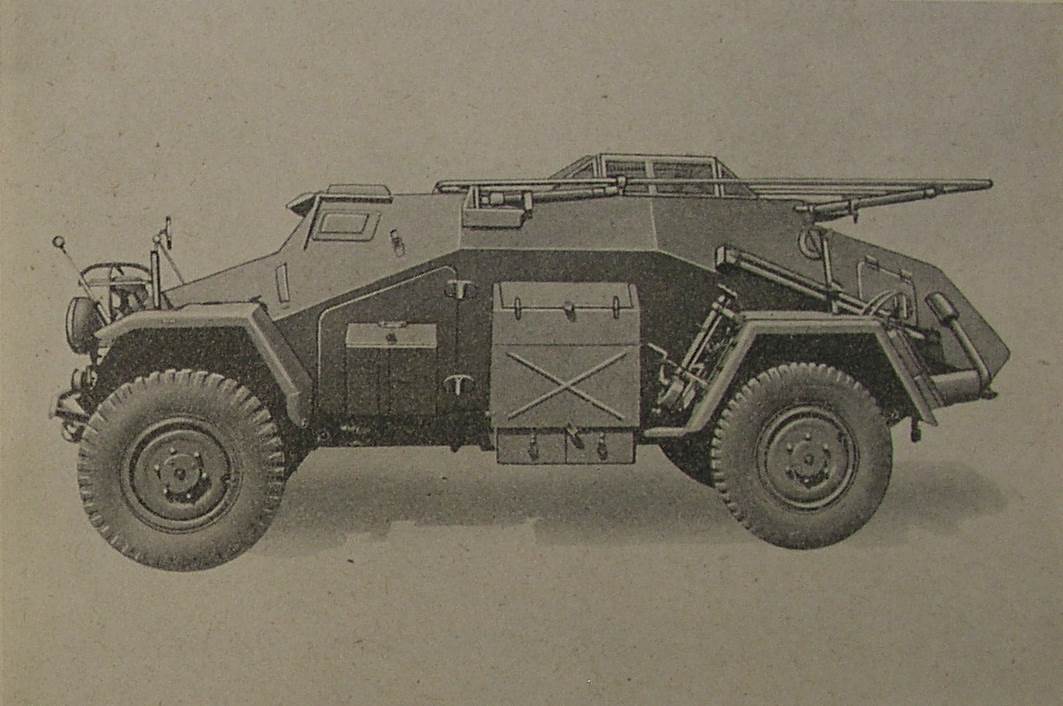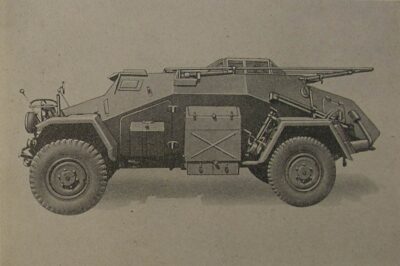We have been collecting German armoured car parts for over 20 years. Many of the parts we have been offered, came without the knowledge of which Serie or variant the parts or panels related to. They are inevitably sold as German armoured car parts unless located through a specified search. Many of our Sd.Kfz.223 items, including turrets and a complete vehicle have been referred to as Sd.Kfz 221 parts by others. We have generally accepted everything regardless of whether they are for an early or late Sd.Kfz.223, Sd.Kfz.222 or Sd.Kfz.260 variant.
The reality is we are unable to predict what parts would be the next to appear, so have avoided turning down offers in the leichte Spähwagen range. We now as a result have many Sd.Kfz 234 parts, which we are very unlikely to use. The same happened with the Sd.Kfz.261 Ausf. B (5 Serie ) armoured car. Over time, more and more parts and body panels arrived, which were stored. Then one day a chassis was offered, which we accepted, and was subsequently delivered.
The SdKfz 261 chassis was in two halves, having been split due to a traumatic event during WWII. At some point the chassis had also been stripped. This proves extremely unhelpful, as the earlier chassis components make it easier to track down components by comparison. However, we have subsequently had some success in locating many of the chassis components.
Research is a key part of any of our restoration projects. We investigate the development history of the vehicle, as well as its full history and where it served if possible.
Our initial survey showed that the design of the chassis had not stood the test of time. Exposure to rain or being buried underground for 70 years, had taken its toll. It had not weathered as well as the various earlier s.Pkw.I Fahrgestell Typ 801 chassis in our possession. The build design for the earlier chassis, appears to have been made from thicker channel section material.
Work started on this Typ v Fahrgestell for the Sd.Kfz.261 Ausf.B chassis in late 2018. We sent the chassis to a chemical rust stripping specialist, to allow the major surgery required to return it to a roadworthy condition. The chassis was now in a vastly different state.
When our engineering team stripped down our Typ 801v Fahrgestell chassis the opportunity arose to examine the Querlenker (wishbone) set-up and chassis construction in detail. The investigation has highlighted a greater difference between this Typ 801v Fahrgestell and other surviving Typ 801v Fahrgestell . This difference is not of concern but portrays the ongoing design changes in German vehicles within their short lifespans in WWII.
Our more solid Querlenker appears to be simply caused by the addition of parts provided at or post assembly for the strengthening of both the chassis and the suspension. Additional struts and inserts for the Querlenker , are also evident. We are not aware when these upgrades were made available, or whether the 5.Serie vehicles were rebuilt when they were taken back from the field for overhaul. No information survives on this detail. What is clear is that the chassis design was inherently weak when abused in tough cross-country conditions. It was prone to flexing where the weight of the armoured superstructure, engine etc. caused the chassis rails to twist inwards at the bottom edge of the chassis rail from back to front longitudinally.
The chassis number had previously been wire brushed in an attempt to break through the rust and allow us to read it. The number was now crystal clear, as there was no rust sediment in the numbers that had been stamped into the frame. This appears to show 811 0027 and was recorded as such. One last check with a powerful lamp on the number, revealed a completely different number 8110827. The number indicates this was one of the late contract (5 Series) Typ 801v mass production series chassis assembled by Werk Horch A.G and batched by chassis number for the Sd.Kfz 223B series.
We have a number of the later more powerful 3.8 litre Horch Typ 801v engines as well as two of the later gearboxes for this 5th Series chassis. A challenging task lies ahead of us to source the correct prop shaft for this 801v chassis.
The situation with the armoured body (Panzeraufbau ) panels is promising as we already have a complete rear here at the Weald Foundation. This vehicle being an Ausf. B (5th Series) that originally had a three piece body. This consisted of the forward fighting compartment section, the middle rear and then the rear most engine cover hull section. We have had a recent breakthrough for the forward fighting compartment section with both sides secured and the bonnet with part of the front visor area.
The internal details will no doubt be a challenge as there are no complete Ausf. B Sd.Kfz.261 survivors.
- This article has 816 words
- Reading time: 4 minutes
- There are no photos
Become a Member - Access the Full Article
Members gain access to the full content of our articles, including photo galleries.


